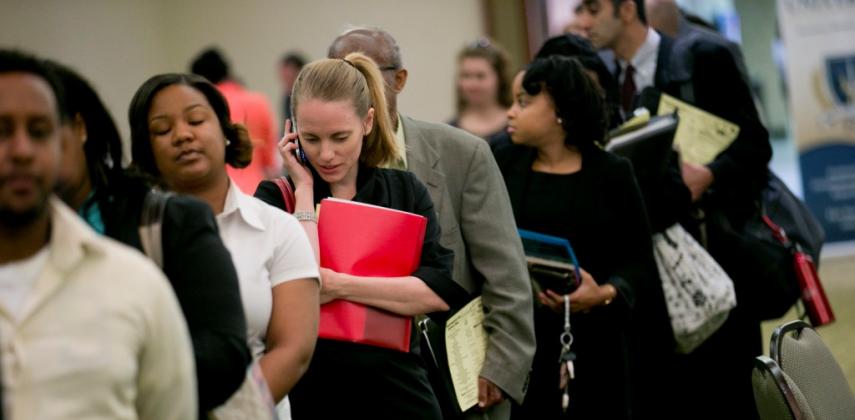SAN FRANCISCO - If the U.S. economy continues to add jobs at the current clip, the labor market won’t return to full health until the end of 2016, new estimates from the Federal Reserve Bank of Chicago showed Thursday.
A gain of just 80,000 jobs a month is enough to keep the current unemployment rate from rising, the research showed. That’s much lower than the 150,000 “break-even” rate than many economists currently estimate.
But the huge job losses caused by the financial crisis and the recession that followed mean the economy must generate more than twice that break-even rate, or 195,000 jobs a month, to bring unemployment down to normal levels within four years, wrote Chicago Fed Vice President Daniel Aaronson and senior business economist Scott Brave in a Chicago Fed Letter dated July 2013.
“Given that unemployment remains relatively high, a substantial improvement in the labor market will require well-above trend job growth,” Aaronson and Brave wrote.
The Fed has said it will maintain its bond buys, now at US$85 billion a month in Treasuries and mortgage-backed securities, until the labor market outlook has made substantial improvement.
The economy has added an average of 196,000 jobs a month since January, and a government report due on Friday is expected to show 170,000 jobs were added in May. Economists expect the current 7.5 per cent unemployment rate to be unchanged.
Chicago Fed President Charles Evans has said he would want to see monthly job gains of more than 200,000 for several months running before he would support any reduction in the Fed’s current round of bond-buying.
Thursday’s paper underscores Evans’ reasoning. To restore full employment by the end of 2015, the economy would need to add 240,000 jobs a month, the economists said.
Adding 165,000 jobs a month - just a shade under what economists estimate were generated last month - would deliver full employment in five years, they said.
The paper is notable both because of its low estimate for the break-even point for monthly jobs gains, and because it throws into such stark relief how many more years of outsized jobs gains are needed before the job market returns to health.
The economy needs fewer monthly job gains each month to keep unemployment from rising because of a long-term decline in the number of job seekers. That trend is expected to accelerate as baby boomers retire and the population ages, they said, and the break-even figure will continue to drop as the decade progresses.
Just 35,000 job additions will needed each month to keep unemployment steady from 2016 to 2020, they estimated.
The paper relies on data through the end of 2012. It estimates that by next year a fully healthy labor market, in which wage pressures don’t give rise to unwanted inflation, would be marked by about 5.25 per cent unemployment.
REUTERS


